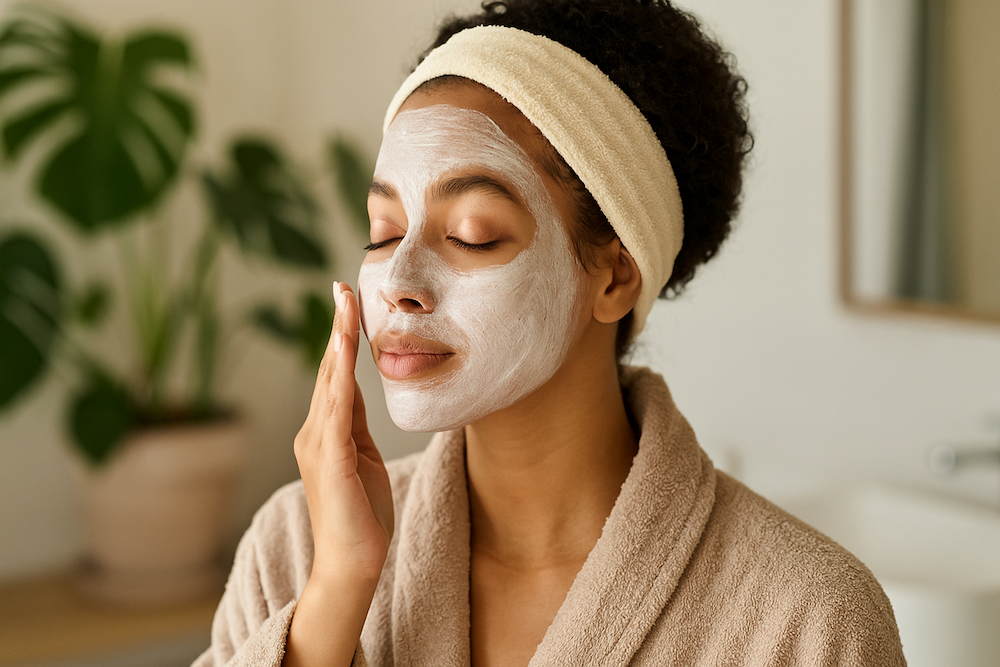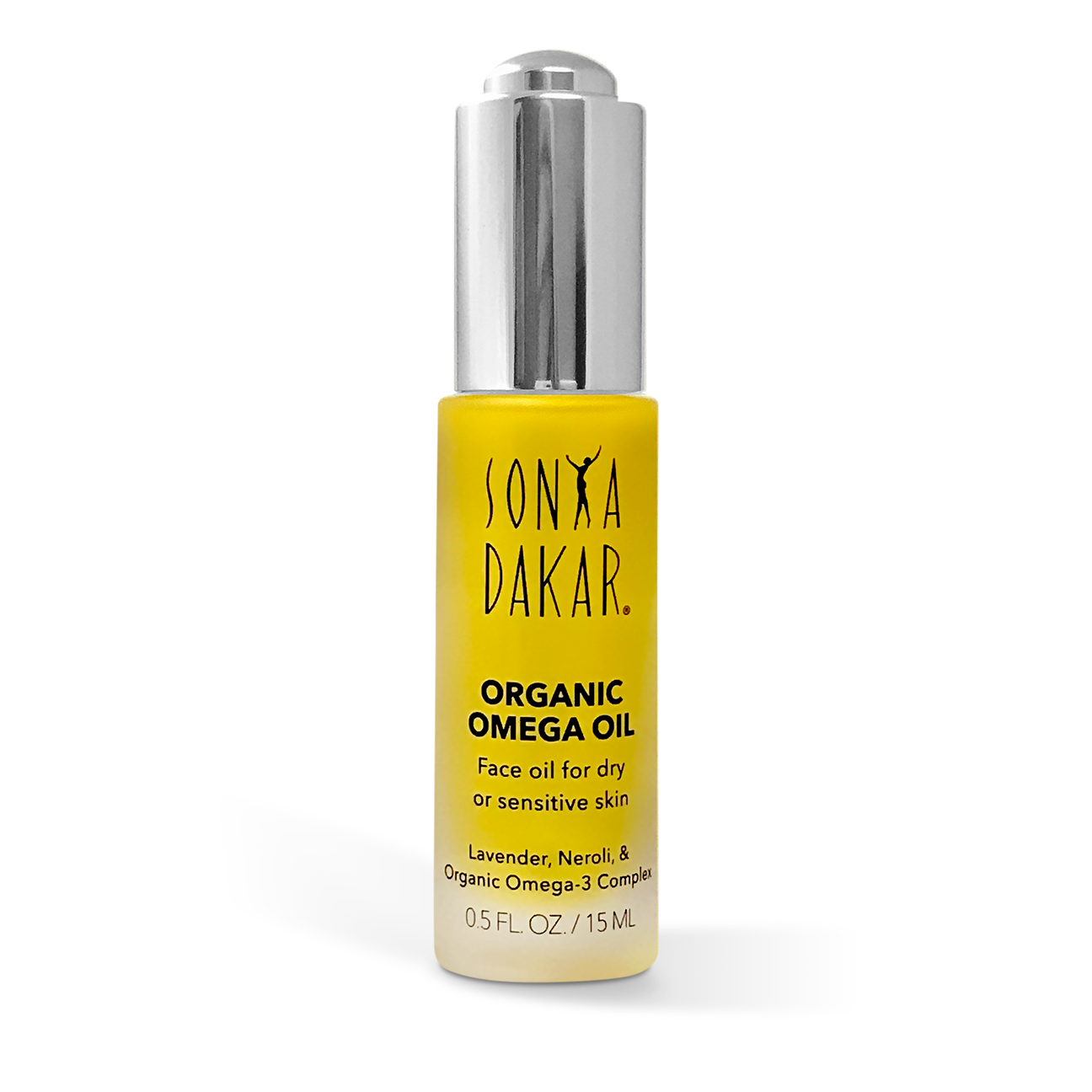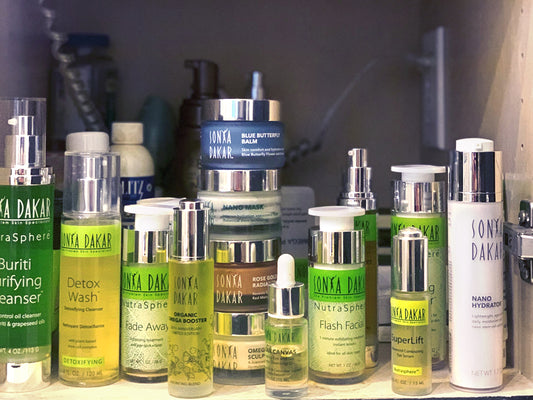
How to Use a Face Mask for Glowing Skin: The Sonya Dakar Expert Guide
Face masks are more than just a moment of self-care—they’re your shortcut to radiant, healthy skin. But the secret isn’t just which mask you use—it's how you use it. At Sonya Dakar, we’ve spent decades perfecting the art of masking, and we know that correct application makes all the difference between “nice” results and truly transformational skin.
Whether you’re battling congestion, dullness, or dryness, your skin’s needs can change week to week—and your mask routine should flex with it. In this guide, you’ll learn step by step how to apply a face mask, how long to leave it on, and how to choose the perfect Sonya Dakar mask for your skin’s mood. Ready to glow? Let’s get masking.
Why Proper Mask Technique Matters
You might think a mask is a mask—but there’s a reason some treatments feel lackluster and others feel transformative. A mask that’s applied too thick, left on too long, or layered incorrectly can lead to irritation, clogged pores, or uneven results. By mastering technique and timing, you let the active ingredients penetrate deeply and work precisely where your skin needs them.
Prepping Your Skin (the Foundation for Success)
Before you reach for that jar, take these prep steps to maximize absorption and performance:
- Double cleanse: Use a gentle oil or balm cleanser first to dissolve makeup/sunscreen, then a low-pH gel or cream cleanser to remove residue. Clean skin = better mask efficacy.
- Exfoliate (1–2× per week): Use a mild chemical exfoliant (AHA, BHA) or a very gentle scrub to slough off dead skin. This allows mask actives to penetrate evenly.
- Pat skin slightly damp: Don’t let your skin fully dry. A little moisture helps spread the mask more evenly and minimizes tugging.
Step-by-Step: How to Apply a Face Mask Correctly
- Use clean hands or a mask brush/spatula: This prevents contamination and ensures even coverage.
- Apply in thin, even layers: Start with one region (e.g., forehead) and smooth outward. Avoid piling on thick layers.
- Layer strategically (optional): If you’re doing a double-mask technique (e.g., hydrating + clay), apply the gentler mask first, then a clarifying mask where needed.
- Avoid sensitive zones or eye area unless directed: Leave a small margin around eyes and lips unless the formula specifies otherwise.
- Remove gently: Use lukewarm water and a soft cloth; press and lift rather than rubbing harshly.
How Long Should You Leave a Mask On?
The right timing is critical. Leave-on duration depends on mask type and your skin’s condition:
- Clay / detox masks (e.g., Volcano): 10–15 minutes. Don’t let it dry to a brittle crust—remove while still slightly damp.
- Gel / advanced delivery masks (e.g., Nano): 15–20 minutes or per directions.
- Radiance / glow masks (e.g., Rose Gold): 10–20 minutes depending on skin sensitivity.
- Overnight / leave-on (e.g., Omega Overnight): Apply before bed; rinse in the morning.
Tip: Always follow the jar’s instructions; if skin stings or feels too tight, rinse early and adjust time next use.
Which Sonya Dakar Mask Should You Use?
Choose based on your current concern. You can also multi-mask—use different formulas on different areas—or rotate through the week.
Volcano Mask
When pores feel congested or T-zone is shiny, this detox clay step clarifies without over-stripping. Apply as a targeted treatment (10–15 min) on areas that need extra purification.
Blue Magic Face Mask
Hydrates and calms sensitized or irritated skin. Use first when double masking (5–10 min) to cushion and replenish before a clarifying step—or alone on recovery days.
Nano Mask
Our advanced delivery mask for revitalized, bouncy skin. Wear 15–20 minutes on its own, or layer under a radiance treatment when you want extra “glass skin” results.
Rose Gold Radiance Mask
For instant luminosity. Use 10–20 minutes before makeup or an event for a soft-focus glow and smoother texture.
Omega Overnight Sculpting Mask
Rich, nourishing, and designed for extended wear. Massage into clean skin as your final step; wake up with plush, soothed skin.
Masking Mistakes to Avoid
- Letting clay masks dry until bone-dry (dehydrates and can irritate).
- Applying too thickly—thinner, even layers deliver actives more effectively.
- Waiting too long after cleansing before masking—apply while skin is slightly damp.
- Over-masking daily with actives—build in recovery days.
- Skipping moisturizer or barrier support post-mask.
Why Proper Mask Technique Matters
You might think a mask is a mask—but there’s a reason some treatments feel lackluster and others deliver that unmistakable post-facial glow. Technique determines how well the active ingredients reach the skin’s target layers.
When a mask is applied too thick, allowed to dry completely, or layered over unprepped skin, ingredients can’t properly penetrate. Evidence in cosmetic dermatology suggests that applying treatments to exfoliated and hydrated skin enhances absorption through the stratum corneum, while buildup or excessive dryness can reduce it. In practice, this means gentle exfoliation and slightly damp skin before masking help your formula work smarter.
At Sonya Dakar, we see this daily in our spa treatments: properly prepped skin allows masks to perform at their highest potential—drawing out impurities, restoring hydration, and leaving skin more balanced. That’s why each mask in our collection is formulated not only for specific concerns, but also to complement proper technique. Whether you’re clarifying with Volcano Mask or soothing with Blue Magic, applying it correctly ensures professional-level results at home.
Frequently Asked Questions (FAQ)
How often should I use a face mask?
Most skin types benefit from masking two to three times per week. If your skin is sensitive or newly exfoliated, once a week is enough. Rotate formulas — hydrating, clarifying, brightening — based on your skin’s changing needs.
Can I layer two masks at once?
Yes — in fact, it’s one of Sonya’s favorite spa techniques. Start with a soothing or hydrating mask like Blue Magic or Nano, then apply a detoxifying formula like Volcano Mask only on areas that need it (T-zone or chin). This targeted approach balances your entire complexion.
Should I exfoliate before or after masking?
Always exfoliate before, not after. Gentle exfoliation removes surface buildup and allows active ingredients to penetrate evenly. Post-mask, focus on hydration and barrier repair with your moisturizer or Omega Overnight Sculpting Mask.
What if my mask tingles or tightens?
A mild tingle is common with active ingredients like volcanic minerals or fruit enzymes. But if it stings, burns, or causes redness, remove immediately and switch to a calming formula such as Blue Magic. Over-masking or leaving on too long can also cause tightness.
Can I sleep in a mask that’s not labeled “overnight”?
No — only overnight masks like Omega Sculpting are designed for extended wear. Clay, enzyme, or radiance masks should be removed after their recommended time, as leaving them on too long can dehydrate skin.




